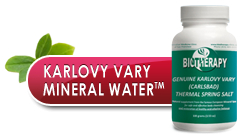By Peter Melamed, Ph.D.
What does the pancreas do? Where is it in the human body? What do I need to know about the pancreas? These are great questions to ask about the pancreas. There are some organs that everyone knows about. If you ask people to tell you where their heart is, they point right to it. In terms of organs, the pancreas is not as popular as the heart or the kidneys.
Google searches indicate that comparatively, the pancreas is not searched as much as the heart, liver, kidneys, lungs or colon. However, do not let that sway you. The pancreas or pancreatic gland is extremely important to your overall health. You cannot live a normal life without it!
Let’s start with geography first. The pancreas can be found across the back of the abdomen, behind the stomach. One part of the pancreas is cradled in the curve of the duodenum, the first part of the small intestine.
Next, what does the pancreas do? To put it simply, a lot! The pancreas is a multi-tasker; it is both an exocrine and endocrine gland. If it were on a football team, it would play both offensively and defensively. Being an endocrine gland, the pancreas manufactures special blood messengers or hormones that go into the blood system. One such hormone is the very well-known insulin. Anyone with diabetes knows the importance of insulin. Being an exocrine gland, the pancreas produces digestive enzymes that are released into the small intestine via ducts, valves, and chambers. The digestive enzymes of the pancreas break down everything that we eat–proteins, fats and carbohydrates– into small particles that are absorbed into our gut’s wall. From there, these food particles get into our blood so that our bodies can use the food for cellular energy, building our cells, feeding our bodies with nutrients, minerals, and vitamins. A big thank you goes out to the pancreas; it is the core to proper digestion.
People can eat healthy, organic, wonderful food, but it will not matter if the pancreas is not working correctly. If the pancreas produces low quality and low amounts of digestive enzymes, the body will not absorb food well. All the nutrients, minerals, and trace elements that the body needs will not be entering the bloodstream properly.
There are microorganisms in the gut that ferment undigested food. This fermentation process produces a lot of gas and toxic, irritated substances. Most people have experienced symptoms of indigestion, such as belching, gas, abdominal cramps, bloating, heartburn, diarrhea, or constipation. These are all ways that the body rids itself of gas and toxic, corroded matters.
If a person continually works overtime, is stressed and malnourished, burnout is fast approaching. This individual will become exhausted, sick, and weak. The same things happen to the pancreas when it is not working correctly. Here are some factors that cause the pancreas to be overworked and not function effectively:
- In the fast-paced world that we live in, more people eat processed food that is easy to order and eat without taking too much time. But many of these processed foods do not have living
natural enzymes. The absence of living enzymes in food forces the pancreas to work harder and produce more of its own digestive enzymes to digest food properly.
- Today, most people are acidic. Whole body acidity destroys the pancreas in many ways. There is so much to whole body acidity that Biotherapy Clinic’s E-book, Healthy Pancreas, Healthy You, discusses this subject matter in detail.
- Along with eating more processed foods, people also tend to eat more unnatural food combinations. Such food combinations are difficult to digest and cause the pancreas to work harder than it should.
- Many people are deficient in bicarbonate, potassium, magnesium, zinc, cobalt, and other minerals and have a low intake of vitamins. The pancreas cannot work well without these critical nutrients.
- In the hectic modern world, many people have an alcoholic drink to decompress; however, alcohol is the archenemy to the pancreas.
- Daily stress is harmful to the pancreas, and constant stress negatively changes its hormonal and neural system.
If the pancreas, which is the main digestive organ, is sick, then a person will suffer digestive disorders. This is a classic cause and effect scenario. Some people see their doctors and tests are ordered. The results of these tests come back normal. Logically, people then believe that their pancreas is fine. At Biotherapy Clinic, it is often heard: “The doctor told me my lab tests are normal and my pancreas is okay.” Sadly, this is not always true. Standardized, routine tests do not test for the lower functioning of the pancreas. These tests have a limited scope. Low-quality digestive enzymes and less than enough digestive enzymes being produced are not on their radar.
So if a pancreas is sick and standard tests are too limited to pick up on this, how do you know if your pancreas is sick or not? Focus on the symptoms. Indigestion symptoms are telling you something.
Millions of people in the United States suffer from functional disorders of the gastrointestinal (GI) tract, such as functional dyspepsia, irritable bowel syndrome (IBS), gastroesophageal reflux disease (GERD), bile dyskinesia, constipation, etc. Doctors refer to these maladies as functional because there are no structural damages to the digestive tract but a digestive function is impaired. With almost all of these disorders, the pancreatic function is not working optimally; its abilities have been compromised.
We can thank Mother Nature for the human pancreas having a 90% capacity. In other words, serious, life-threatening symptoms can manifest in the body when 10% or less of the pancreas function exists. The pancreas rarely loses 90% of its total function overnight. From the first incidence of pancreatitis to the end stage of chronic pancreatitis, the time frame is generally 8-15 years. Mother Nature is giving us big hints early on so that we have time to repair the pancreas. A person does not need to get to the end stage of pancreatitis. Now is the time for action!
What is the non-drug, non-surgical approach to improving pancreatic function? To answer that question, we have to look at pancreatic juice. Pancreatic juice is made up mainly of water, followed by minerals, trace elements, bicarbonate and proteins that are mostly enzymes. These ingredients are the “fuel” that the body needs to be alive. A car without gasoline isn’t going anywhere.
Good news. There is a unique healing mineral water that has the exact ingredients found in pancreatic juice. In a small town in the now Czech Republic, a thermal spring was found hundreds of years ago. Karlovy Vary (Carlsbad) thermal mineral water has been prescribed to patients in Europe for over 500 years. This healing mineral water is made up of minerals, trace elements, and bicarbonate.
With hundreds of years testing and studying Karlovy Vary mineral water, European doctors realized that this healing water increases the amount of pancreatic juice produced and the quality of the pancreatic juice is better. All this makes for an alkalized environment in the small intestine, which is what we want. Pancreatic digestive enzymes work best in an alkaline state. Millions of people have improved health because they drink mineral water from the Karlovy Vary thermal spring.
With such noted success, many people in Europe wanted Karlovy Vary spring water. Not all people could afford a trip to the Karlovy Vary thermal spring or were too sick to travel, so those at Karlovy Vary found a way to vaporize the thermal spring salt. Since 1764, the spring salt has been sent to people worldwide. By following the instructions, people could make the spring water at home and obtain the same healing results as those who went to Karlovy Vary.
European doctors prescribed Karlovy Vary mineral water for people suffering from a range of digestive disorders. It is important to note that genuine Karlovy Vary spring salt also significantly helps with major pancreatic illnesses as well, specifically diabetes and chronic pancreatitis. The latter is a long-lasting inflammation of the pancreas and indicates damage to the pancreatic function.
An alkaline, healing diet, acupuncture, herbal medicine, nutritional supplementation, healing mineral water, restoration of beneficial intestinal bacteria, abdominal manipulation, relaxation and medical hypnosis are all valuable tools, used worldwide to heal pain and indigestion associated with chronic pancreatitis.
Some statistics are hard to ignore. Approximately 87,000 new cases of pancreatitis occur annually in the United States. An estimated 900,000 ambulatory care visits occur each year due to pancreatitis. And these numbers are only the tip of the iceberg. Many, many cases of pancreatitis are not reported or recorded because milder cases of pancreatitis can go undetected.
Regrettably, pancreatitis is not dealt with early enough. Modern medical books, textbooks, and articles describe the symptoms of chronic pancreatitis as constant pain, diarrhea, and weight loss. By the time experienced medical staff recognize chronic pancreatitis in a patient, it is too late. A person is already in the end phase of chronic pancreatitis. Trying to heal a pancreas that is working at only 10% capacity or less is extremely challenging if not impossible.
The pancreas is such a vital organ to overall health. Some keys points from this article are worth highlighting:
- With all digestive disorders, the pancreatic function has fallen; it is not working optimally. When the pancreas is producing low quality and less than the needed amount of pancreatic digestive enzymes, several symptoms can appear. Some of these symptoms are abdominal pain, nausea, belching, heartburn, abdominal cramps, gas, bloating, diarrhea, constipation, etc.
- Pancreatic disorders with low pancreatic function are more common than you might think. Experts found that 13% of people who died from various causes exhibited pancreatic disease. They may not have known that they had a pancreatic illness when they died.
- The earlier you start to treat pancreatic disorders, the better. Early detection and treatment can yield positive results and significant healing for a person.
- Non-drug, non-surgery healing methods improve one’s quality of life and can delay the worsening of pancreatic disorders. Natural, alternative medicine approaches can be used successfully with conventional “Western Medicine” treatments.
Alternative medicine may offer various, evidence-based, scientific, time-proven healing methods such as:
- Eating an alkalized, healing diet
- Drinking Karlovy Vary healing mineral water
- Using acupuncture
- Taking herbs
- Having chiropractor manipulations and abdominal massage
- Taking nutritional supplements
- Participating in medical hypnosis, meditation, relaxation techniques
The key to success with your pancreatic needs is to work with a knowledgeable licensed specialist or team of specialists.
The information in this article is presented for educational, informational purposes only. It is not intended as a substitute for the diagnosis, treatment, and advice of a qualified licensed professional.

